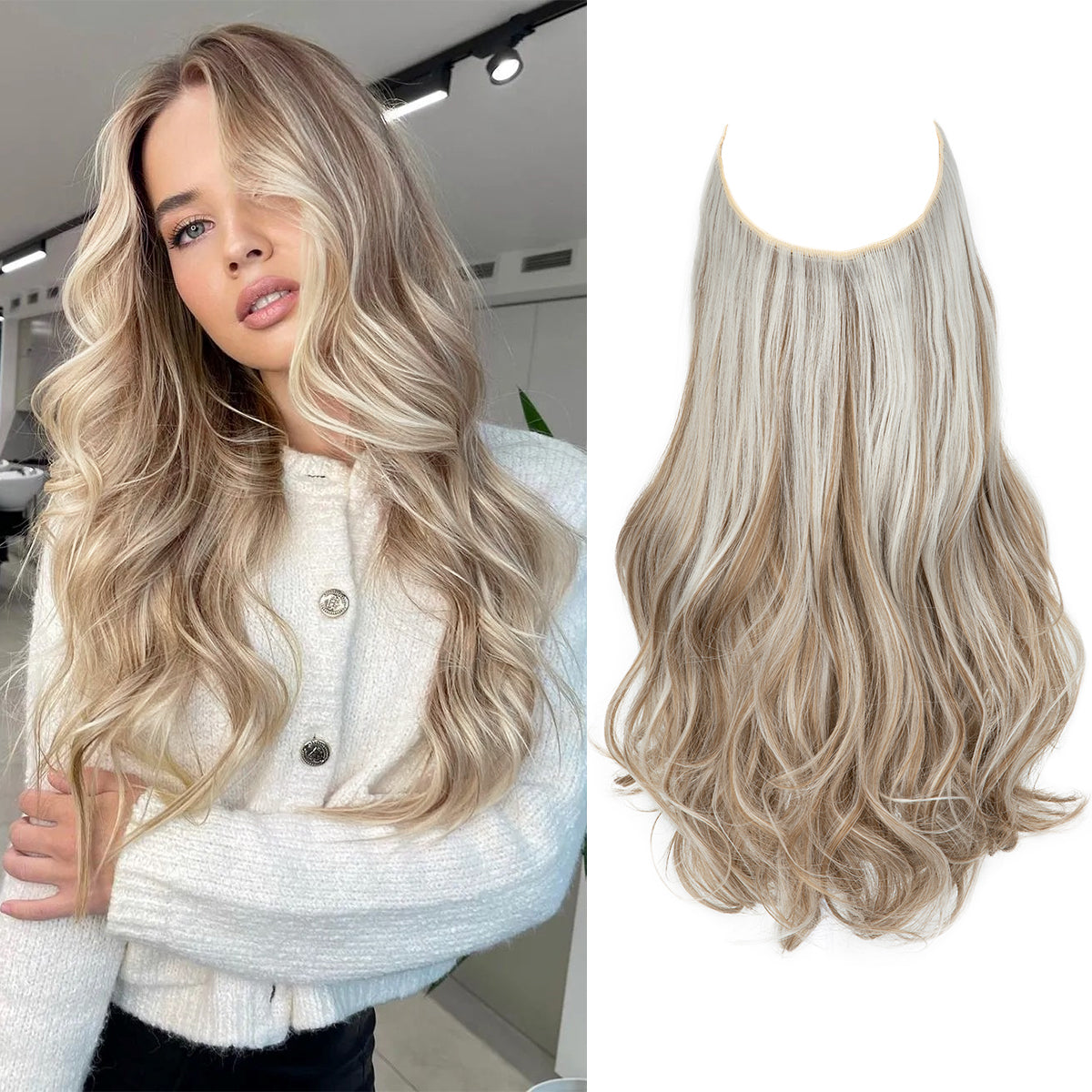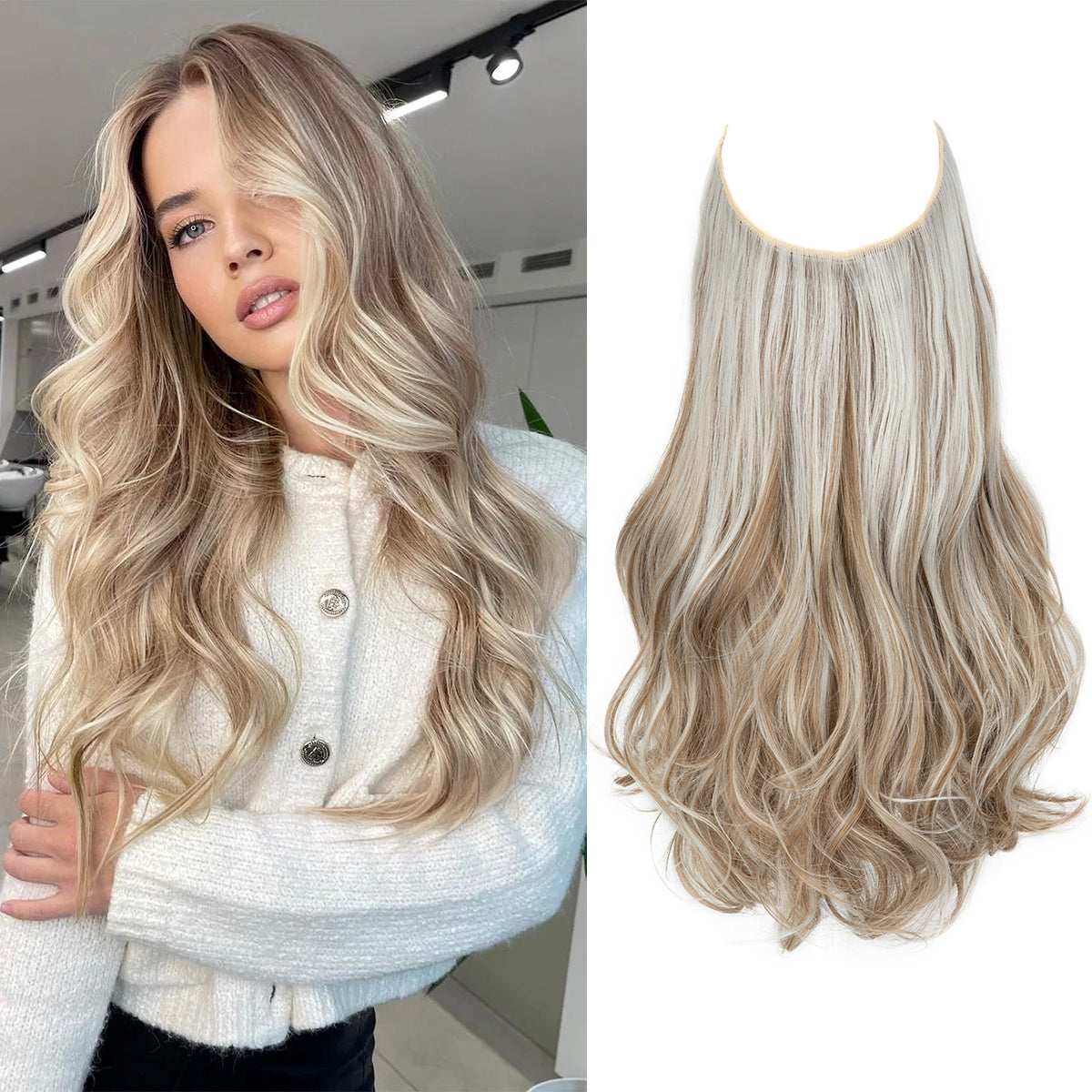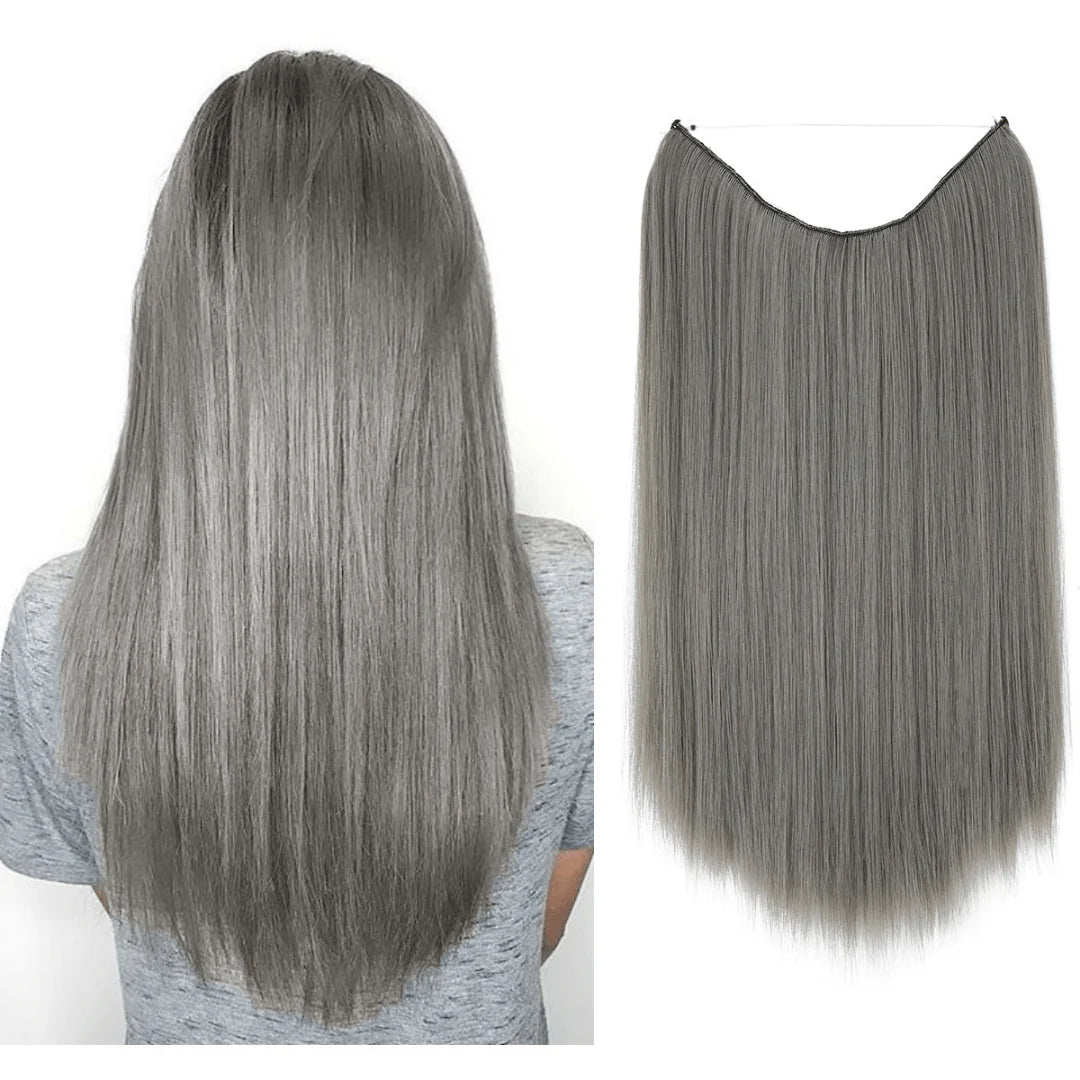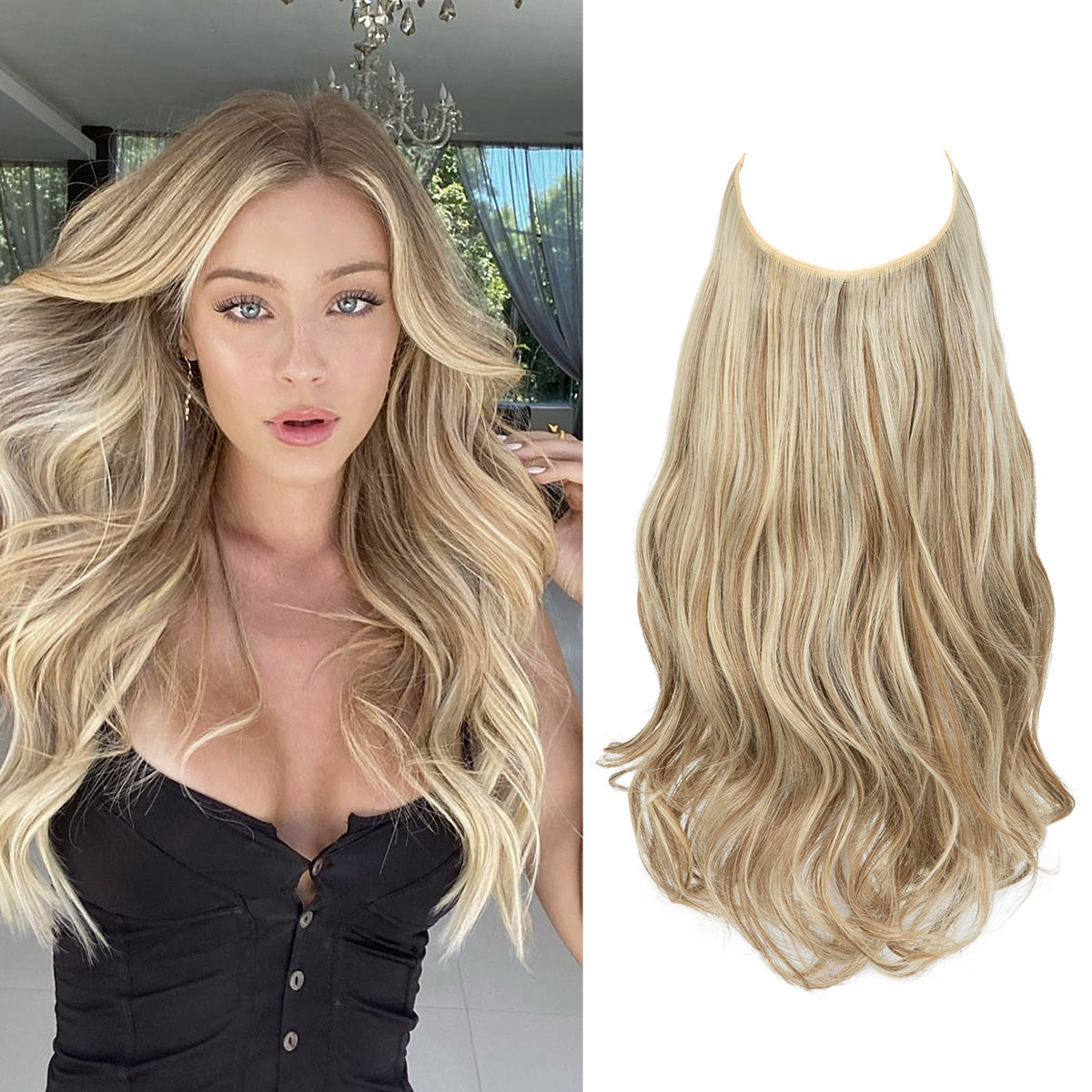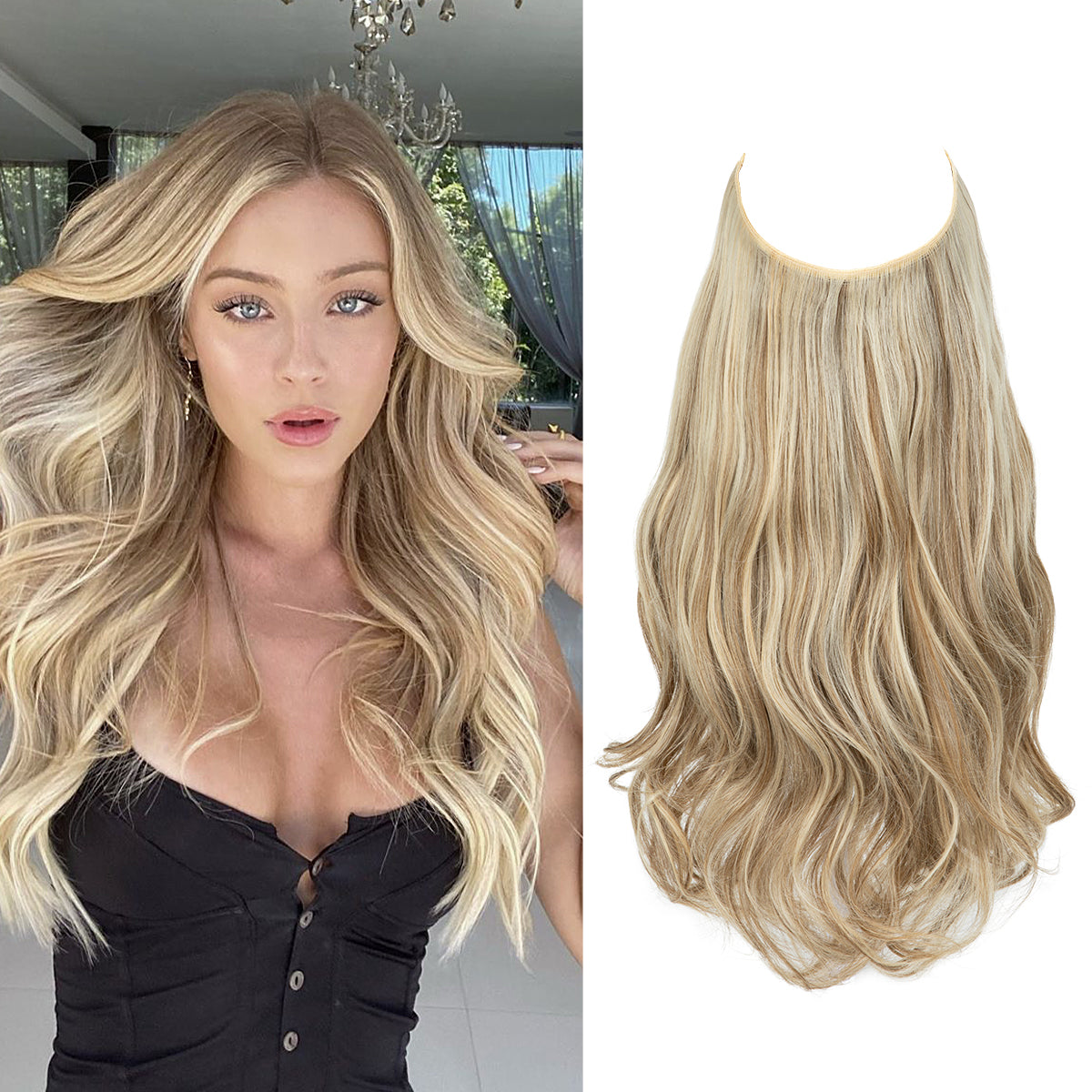
Have you ever wished your hair could be longer, thicker, or just more glamorous without waiting months for it to grow? That’s where tape-in extensions come in. They’re a super cool way to change your hair in a flash.
In this guide, we’re going to walk you through everything you need to know about tape-in extensions. From what they are and how they work, to the pros and cons, and how they compare to other types of hair extensions. We’ll even help you decide if they’re right for you.
Quality of Materials
Understanding Tape-In Extensions?
Let’s start with the basics. Tape-in extensions are small pieces of hair that are stuck to your natural hair using a special kind of tape. They’re usually about an inch wide and come with double-sided tape at the top. Think of it like a little hair sticker. A hair stylist takes one of these sticky pieces, puts it underneath a thin layer of your real hair, and then adds another sticky piece on top, sandwiching your hair in between.
These extensions can be made from real human hair or synthetic hair. Real human hair extensions usually look and feel more natural, and you can curl or straighten them like your own hair. The tape is safe for your scalp and doesn’t hurt when it’s applied correctly.
The best part? Tape-in extensions lie flat against your scalp and blend right in with your own hair, so no one will even know you’re wearing them. Pretty cool, right? They are designed to be undetectable and feel like part of your own hair. With proper installation, they move naturally, just like your real strands.
Benefits of Tape-In Extensions
Here are the biggest reasons people love tape-in extensions:
- They Look Super Natural: Because they lie flat, tape-ins blend with your own hair perfectly. It’s hard to tell where your hair ends and the extension begins. They’re especially helpful if you want a boost in thickness, length, or both, without a dramatic, obvious change.
- They’re Lightweight: You won’t feel like your head is heavy. Tape-ins are really light and comfortable to wear. Many people forget they’re wearing them after just a couple of days. That’s how well they blend in.
- They Can Be Reused: Good quality tape-in hair can be taken out and used again. You just need to replace the tape. This makes them a budget-friendly choice in the long run, especially if you choose high-quality Remy human hair extensions.
- They’re Quick to Apply: A professional can put them in your hair in about 45 minutes to 1.5 hours. That’s a lot faster than some other types of extensions, like fusion or sew-ins, which can take several hours.
- They’re Kinder to Your Hair: Unlike some other extensions, tape-ins don’t use heat or glue on your hair. This means they’re less likely to damage your natural strands. The tape used is gentle and made for skin contact.
- You Can Style Them: Since they’re real hair, you can curl, straighten, braid, and style them just like your own hair (just don’t put heat on the tape part). They hold curls really well and blend naturally into updos and braids.
- Long-Lasting: Once they’re in, they can stay in for 6 to 8 weeks. That means you can wake up every day with amazing hair. Imagine saving time each morning by not needing to add volume or extensions daily.
- Low Maintenance Between Appointments: With proper care, you don’t need to fuss with them daily. They don’t slip out or need constant adjusting. You just brush, style, and go.
- Customizable: Tape-ins come in a variety of colors and lengths, so your stylist can create a custom blend that matches your natural color or adds highlights without using dye.
Drawbacks & Considerations
While tape-ins are awesome, there are a few things you should know before jumping in:
- You’ll Need Salon Visits: Every 6–8 weeks, you’ll need to go back to the salon to move the tape-ins closer to your scalp as your real hair grows. Otherwise, they can become visible or tangled.
- Not Great for Thin Hair: If your hair is very thin or fragile, the tape might be visible or feel too heavy. Thin hair may not be able to hide the tapes well.
- Be Careful With Heat: You can curl or straighten your hair, but don’t use heat near the tape area. It can make the adhesive melt. Heat protectant is your best friend here.
- Tape Might Show If Applied Wrong: If the stylist doesn’t place them right or your hair is too short, the tape tabs might peek through. That’s why a skilled stylist is key.
- Costs Can Add Up: First-time application can cost $200–800, and reapplication sessions cost around $100–300. Add to that your products and tools.
- You’ll Need to Care for Them: You can’t wash your hair with any shampoo - you’ll need special sulfate-free products. And you’ll need to brush carefully every day to keep your extensions smooth.
- Not for Daily Removal: If you want to take your extensions out every night, tape-ins won’t work. These are semi-permanent and meant to stay in for several weeks.

How Do Tape-In Extensions Work?
In the following paragraph, you can find a step-by-step explanation of the extension process, together with essential information and pro tips.
1. Preparation
Your hair needs to be clean and free of styling products before the extension application process. You need to start the process by washing your hair thoroughly, followed by blow-drying and straightening. This will establish perfect conditions for secure tape adhesion, which is essential for ensuring the extensions stay in place throughout their lifespan.
2. Application Process
Sandwich Method
This is the core technique. A small portion of your actual hair goes between two tape-in wefts that sit underneath and above it. You secure your hair by pressing the adhesive tabs together, which produces a flat and undetectable result that matches your real hair.
Layered in Rows
Your head receives extensions through a pattern that mimics brickwork construction. The method creates balanced volume distribution, which prevents the extensions from creating either excessive bulk or gaps in your hair.
3. Time Needed
The total time needed to complete a full-head installation ranges between 45 minutes to 3 hours. Your hair length, along with its density and the number of wefts installed, determines the overall duration of the process.
4. Maintenance
To maintain your tape-in extensions and make sure they are not worn out or damaged very soon, you need to consider a few maintenance rules, such as:
- Wash your hair every few days with extension-safe shampoo.
- Dry your roots completely after washing. Never go to bed with wet hair.
- Brush gently every day using a soft brush.
- Avoid oil-based products near the tape, as it can weaken the adhesive.
- The hair loses its volume and shape regardless of your styling efforts.
5. Lifespan and Reuseability
The lifespan of tape-in extensions extends from 6 to 10 weeks before you need to reposition them. High-quality extensions can be reused up to three times, provided that users follow proper care procedures and re-taping instructions. After that, the extensions may start to thin out or tangle more easily.
6. Risk of Damage
The improper installation or removal of tape-ins, together with poor maintenance, can lead to hair tension, matting, and breakage. You need to make sure that these important processes are handled professionally - consult a professional if you are not sure you can handle it on your own.
Who Are the Best Candidates for Tape-In Extensions?
Tape-in extensions don’t work for everyone. Here’s how to know if they’re right for you:
Great Candidates:
- Medium to thick hair: The wefts blend more naturally and stay hidden.
- Hair that’s shoulder-length or longer: This makes it easier to cover the tapes.
- People committed to upkeep: You’ll need salon maintenance every 6–8 weeks and daily brushing.
- Those avoiding hair dye: Tape-ins are perfect for adding color without bleaching your natural hair.
- The hair loses its volume and shape regardless of your styling efforts.
Not Ideal for:
- Very fine or thinning hair: The tapes may be hard to hide and can cause breakage.
- Scalp issues or active shedding: Conditions like dermatitis or hair loss make tape-ins risky.
- Frequent swimmers: Water can weaken the tape bond.
- Anyone wanting daily removal: Tape-ins are semi-permanent, not a take-on/take-off solution.
- The hair loses its volume and shape regardless of your styling efforts.
Tape-In vs Other Extension Methods
Tape-in extensions are a great option for many, but they’re not the only method out there. If you find tape-ins aren’t right for your hair type or lifestyle, there are other options to consider. Here's how tape-ins compare to the most popular alternatives.
| Type of Extension | Lasts For | Installation Time | Damage Risk | Best For |
|---|---|---|---|---|
| Tape-In | 6–8 weeks | 1 - 3 hours | Low | Long-term, natural-looking hair |
| Clip-In | 1 day | 5 - 15 minutes | None | Special events or occasional use |
| Halo | 1 day | 5 minutes | None | Easy, quick, no-damage styles |
| Sew-In | 6–10 weeks | 2 - 5 hours | Medium | Thick hair that can handle braids |
| Keratin Bond | 3–5 months | 2 - 6 hours | Medium–High | Very long-term wear |
| Micro Links | 2–3 months | 2 - 6 hours | Medium | Long-term with strand movement |
If you are not sure what extensions work best for you, you can always talk to a professional to help you choose what fits your hair goals best.
Final Thoughts
Tape-in extensions offer a great balance of length, volume, and a natural look. They’re lightweight, reusable, and blend beautifully but they do require regular maintenance, careful handling, and aren’t ideal for everyone.
If you're looking for something easier, Thathair Halo Hair Extensions are a game-changing alternative. Unlike tape-ins, our Halo extensions are completely damage-free, take less than a minute to apply, and require zero salon visits. They’re perfect for everyday wear or special occasions.
Related Products
Ivory Blonde Wavy
Dark Grey Straight
Bahama Beige Wavy

Josef Mohamed is a Content Marketer and Web Designer with over 6 years of experience.He brings a wealth of knowledge to his work, making him a reliable source for readers interested in practical insights about beauty. His writing style is straightforward, aiming to provide real facts and avoid common myths in the beauty industry.




